135 years ago, on 25 April 1886, at one o'clock at night, the roof of the house at 53 Andrássy Avenue caught fire, which, despite the quick and professional work of the fire brigade, burned down three-quarters. The fire also spread from the beams holding the ledge to the parapet, from where three-quarters of the decorative elements also fell down to the street. However, thanks to the double ceiling, the apartments were not damaged and were not soaked during the fire fighting, as the steam-powered fire engine was not used.
The fire fighting, which was watched by a large crowd on the street, was done by six o’clock in the morning. The fire was probably caused by negligence. The insurer, whose palace was built by the owner of the residential house, quickly made good the damage and the roof was restored in May with a stronger roof structure.
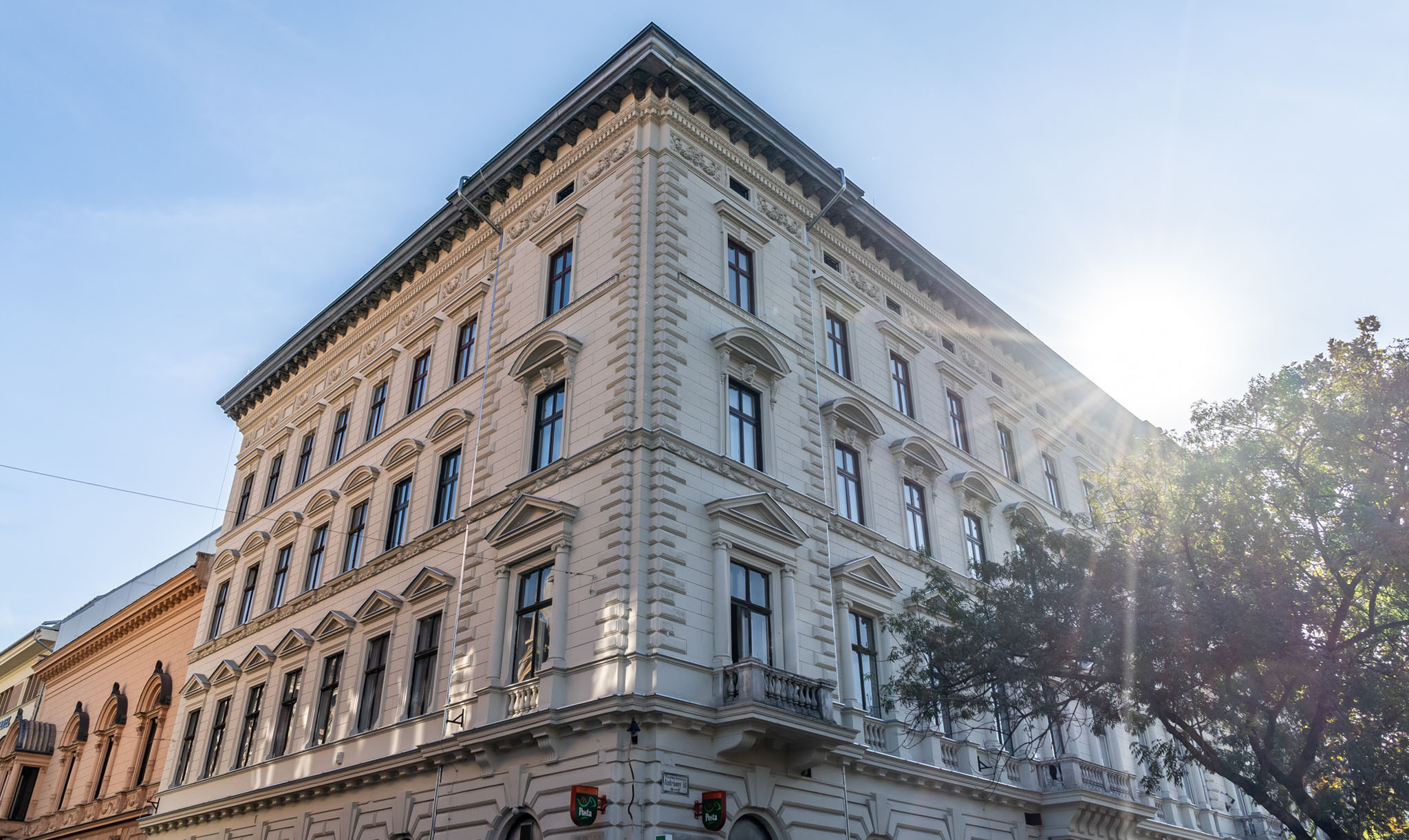
53 Andrássy Avenue nowadays (Photo: Balázs Both/pestbuda.hu)
The plot on the corner of Oktogon and Eötvös Street was bought in 1880 by architect József Pucher and his wife. Pucher was then a city councillor, a member of the building council, the president of the Terézváros Casino, and although he designed several houses as an architect (including the Andrássy Palace on the Bem Embankment), he was primarily known as a construction contractor, buildings like the Nyugati (Western) Railway Station, the two residential buildings of Oktogon or the Palace of Justice are connected to his name. He built 29 palaces on Andrássy Avenue only, including the palace of the Foncière Insurance Company at the beginning of the road, as well as his own residential house.
He submitted his plans for the three-storey corner house in question in the summer of 1882, and after it was completed in 1883, the architect himself moved here. In the portrait of József Pucher, the Magyar Salon mentioned 53 Andrássy Avenue as an example, "which is a model of taste and comfort".
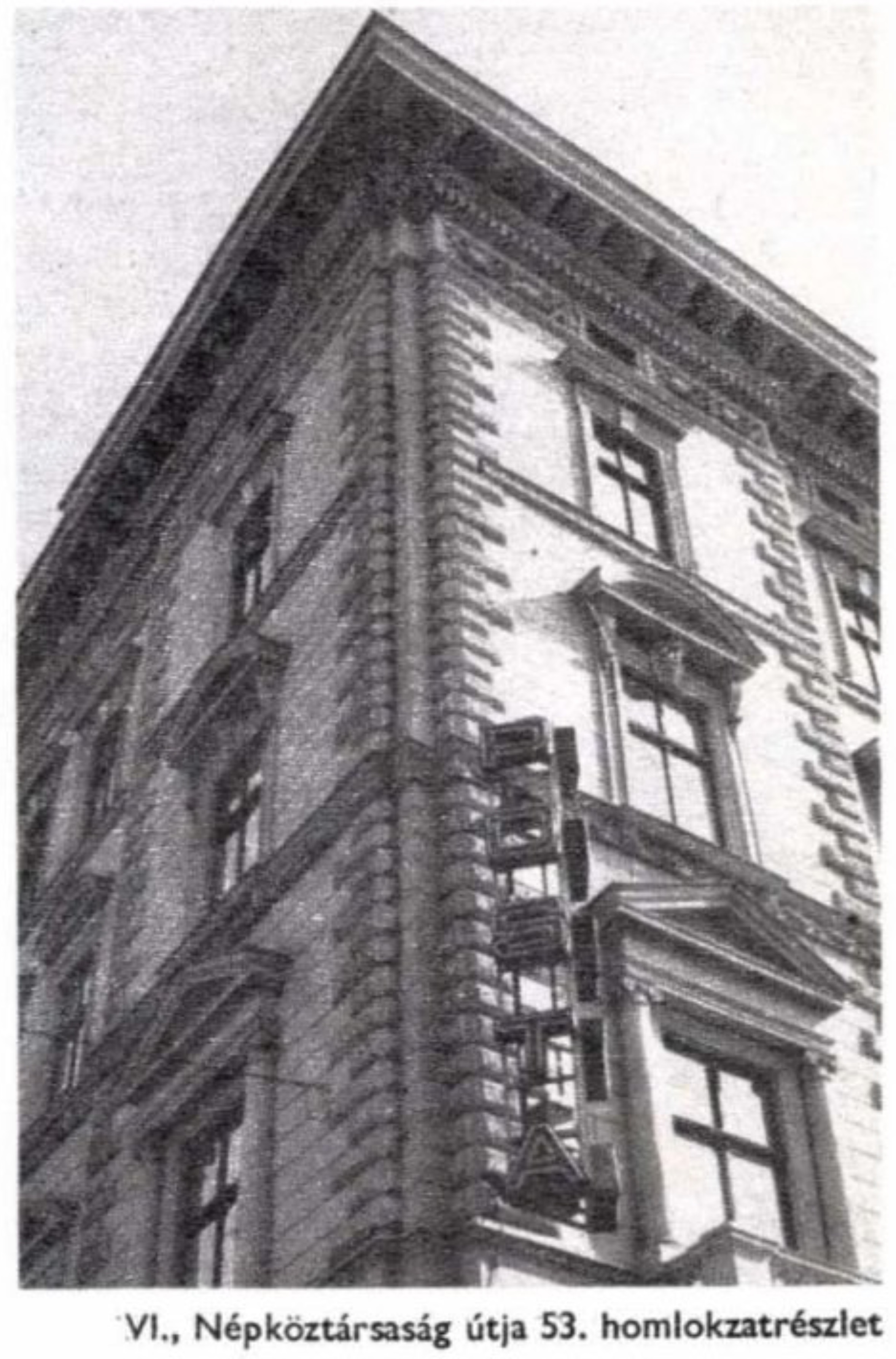
53 Andrássy Avenue on the corner of Oktogon and Eötvös Street in 1979 ( Source: Budapest, 1979)
Soon the Industrial association of builders, masons, stonemasons and carpenters operated here, chaired by the owner himself, Pucher. The architect died in 1903, and his property was inherited by his children. In 1906, his wife established shops on the ground floor, and at the same time, the gate of the building was remodelled. “The gate entrance was made simpler, above the two risalit and the gate - on the 1st floor - a stone balustrade was built. The plan marks a basement window under each ground-floor window, which has been modified with the shop doors so that the interiors have been divided in level” - wrote the Műemlékvédelem in 1970 on the changes to the facade.
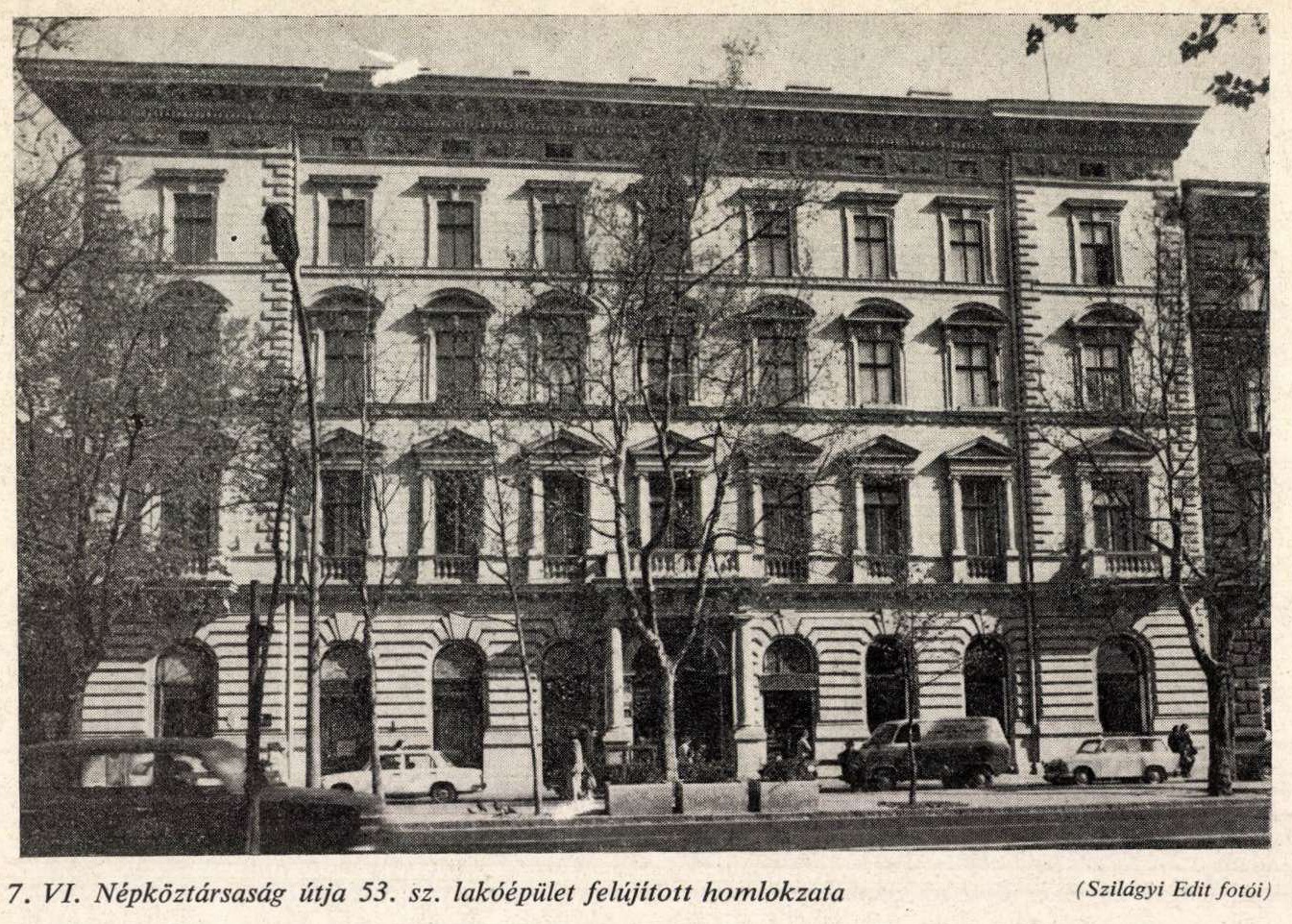
Renovated facade of the house (Source: Műemlékvédelem, 1977)
In the first decades of the 20th century, Ede Lyons' shutter factory, until 1914 the Ideal typewriter's head office and typing school, and then for decades Ernő Farkas' fashion store operated here. In December 1907, Henrik Kugler's niece and nephew opened a confectionery here, furnished to meet the most delicate needs, and then went bankrupt two years later, replaced by the Oktogon drugstore. In the fall of 1909, the building also housed an aquarium, the main attraction of which was an eight-and-a-half-metre giant snake. In 1913, the offices of the Orenstein and Koppel field railway factories of German origin moved here, the factory of which was located in Pestszentlőrinc, along Gyömrői Road.
One of the rooms on the third floor of 53 Andrássy Avenue was the birthplace of the Színházi Élet and its predecessor, the Színházi Hét- The paper was launched on 30 October 1910, when the two founders, journalist Zsolt Harsányi and newspaper editor Sándor Incze, rented a monthly room here. “[…] It was a large vaulted alcoved room in which the inhabitants went to bed late out of ease and arose early out of a passion for founding the paper,” Harsányi recalled 15 years later. Színházi Élet visited the room in the summer of 1926. “Bright parquet, carpets, pictures. The alcoved room where the paper was born: now a salon. In the alcove, where Sándor Incze dreamed of the popularity of Színházi Élet, there is now a pretty copper bed. Everything is extremely clean. The rumbling of the cars can be heard from Oktogon.”
%20(1).jpg)
Színházi Élet was born in this room. The two founders, Zsolt Harsányi and Sándor Incze, rented a monthly room here (Source: Színházi Élet, 1926)
There was a tobacco exchange, a delicatessen, a shoe store, a florist, a hairdresser, an upholsterer, a chocolate shop in the building, but several doctors received their patients here. Moreover, in 1920, for a short time, the passport department of the Hungarian Royal State Police also issued passports here.
In 1935, Sándor Gondos opened a modern Jewish bookstore on the corner of Andrássy Avenue and Eötvös Street.
“The store with five huge shop windows became very nice. The blue-red furniture, the red carpet from the entrance to the wall, the beautiful glass table, the red-blue armchair, the transparent, colourful curtains, the lots and lots of flowers - were all my ideas. Later we expanded it with a gallery, where a winding staircase led up to, here we focused on Jewish books.”
- Múlt és Jövő published the recallings of Sándor Gondos and his wife, Margalit.
In 1935, the builder's son, Ministerial Adviser Dr József Pucher had an elevator installed in the three-storey building. The Pucher family lived in the house for more than fifty years. Finally, in 1936, after the death of Dr József Pucher, his children sold the inherited residential house within a month to Magyar Petróleumipar Rt. The company then moved its offices here. In the 1940s, the Budapest Civil Service and Patient Assistance Association and the Journalists' Sanatorium Association also operated here.
.jpg)
One of the corridors of the house in 1979
Soon after the siege of 1944-1945, the shops that were already here in the 1930s were reopened: the hairdresser's workshop, Béla Stern's dental ceramics laboratory, Nándorné Gallai Gáog's cosmetics institute and Sándor Gondos's bookstore. Gondos moved to Israel in 1946, and his place was used by Dr Norbert Langer and his five-language loan library. In 1950, the 65th Post Office was opened in this corner shop - in the premises of the Hungarian Philatelic Company. Because the building was damaged during World War II, it underwent repairs in 1949 but was again damaged during the 1956 fighting.
The complete reconstruction of the listed building began in 1969 when the elevator was replaced. “Restoration of the building is not a problem as a monument, because the missing rustication, ashlaring, nutation, cornices, window frames, can be clearly restored based on the remaining details. The endstones on the 2nd-floor windows had female and male heads taking turns. They have mostly been destroyed, but some have remained intact on both facades, so replacing them is not an obstacle." - the renovation was presented in 1970 by the Műemlékvédelem magazine. The ceilings, originally decorated with stucco, have not been restored.
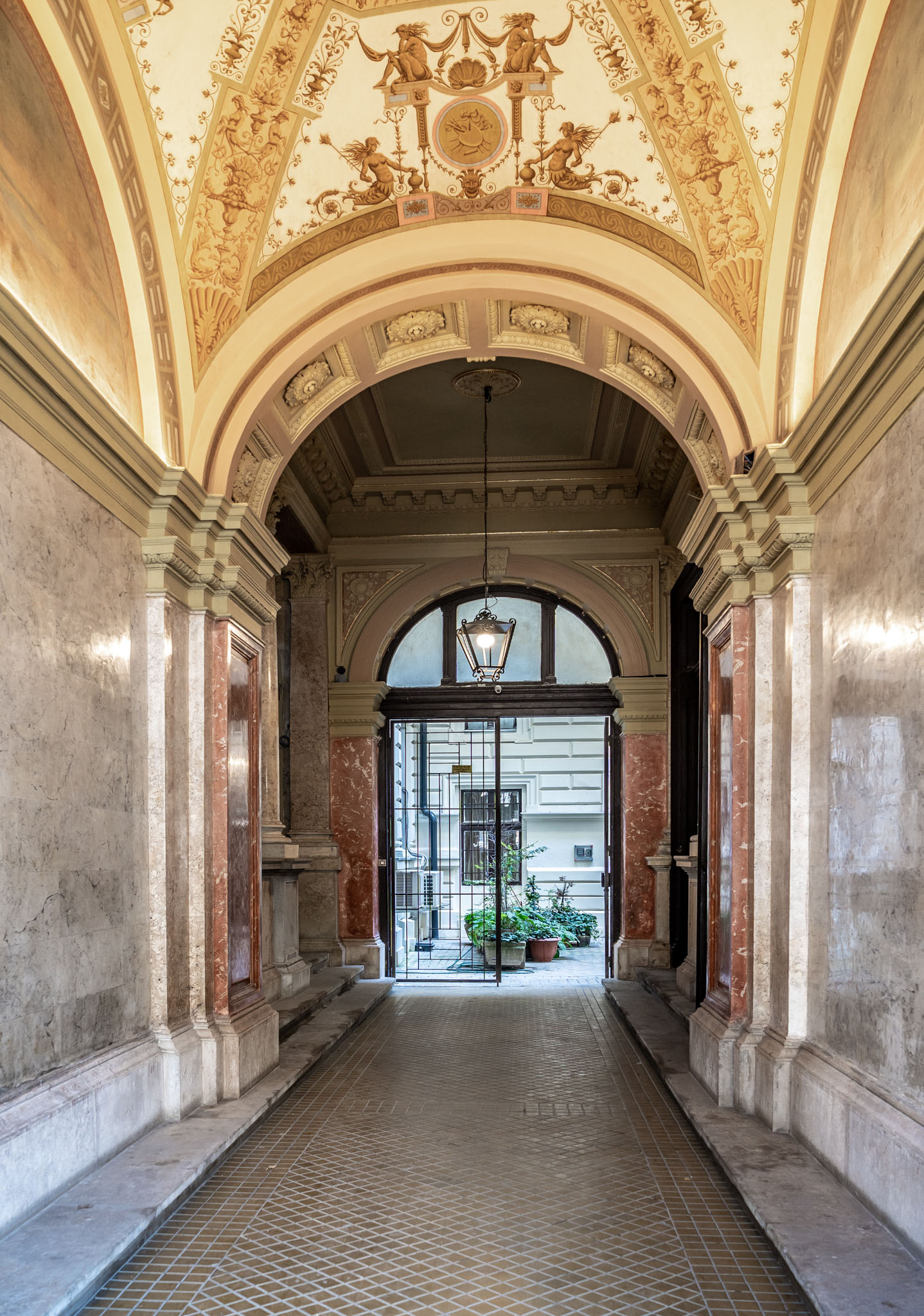
The gateway was also restored (Photo: Balázs Both/pestbuda.hu)
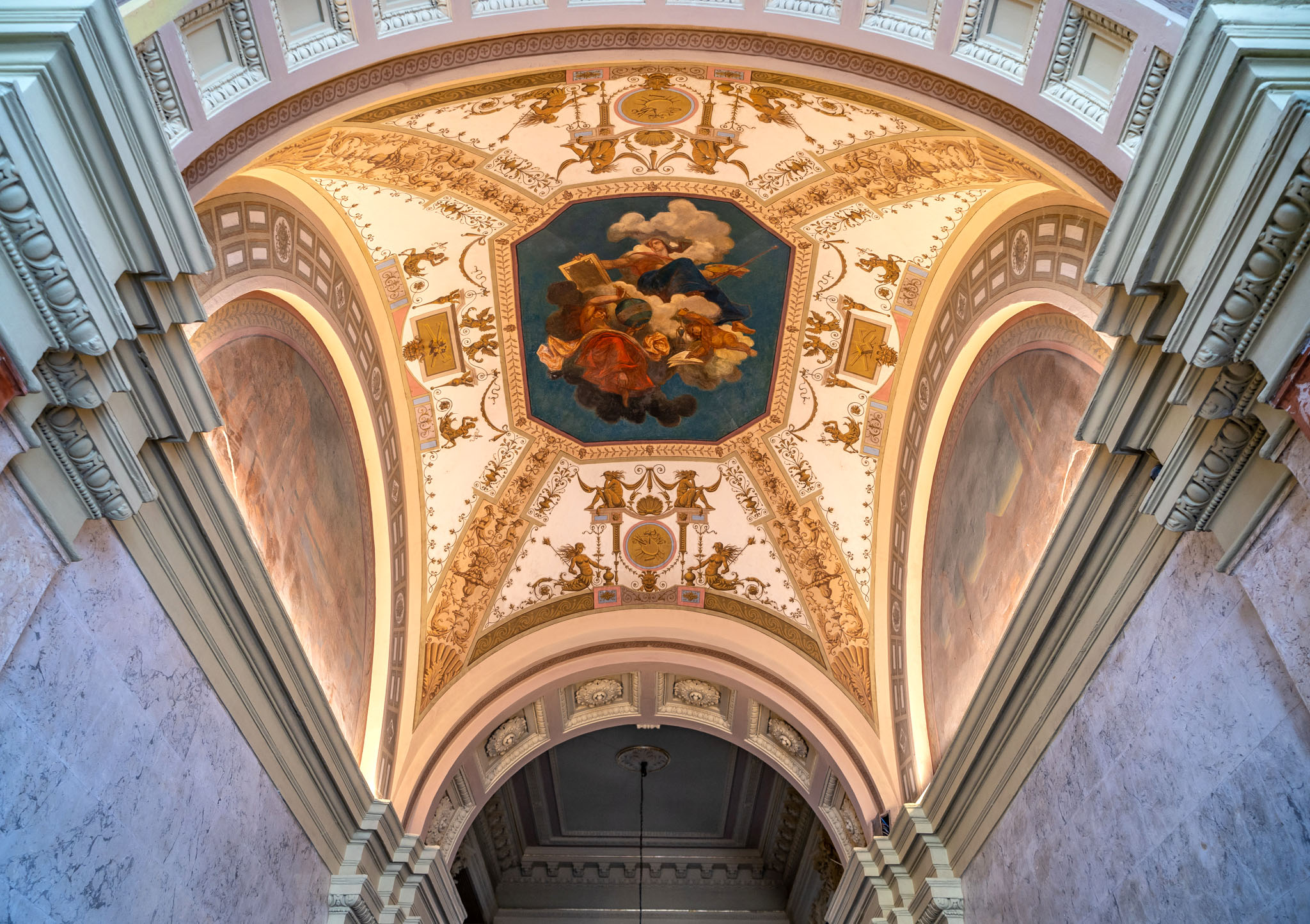
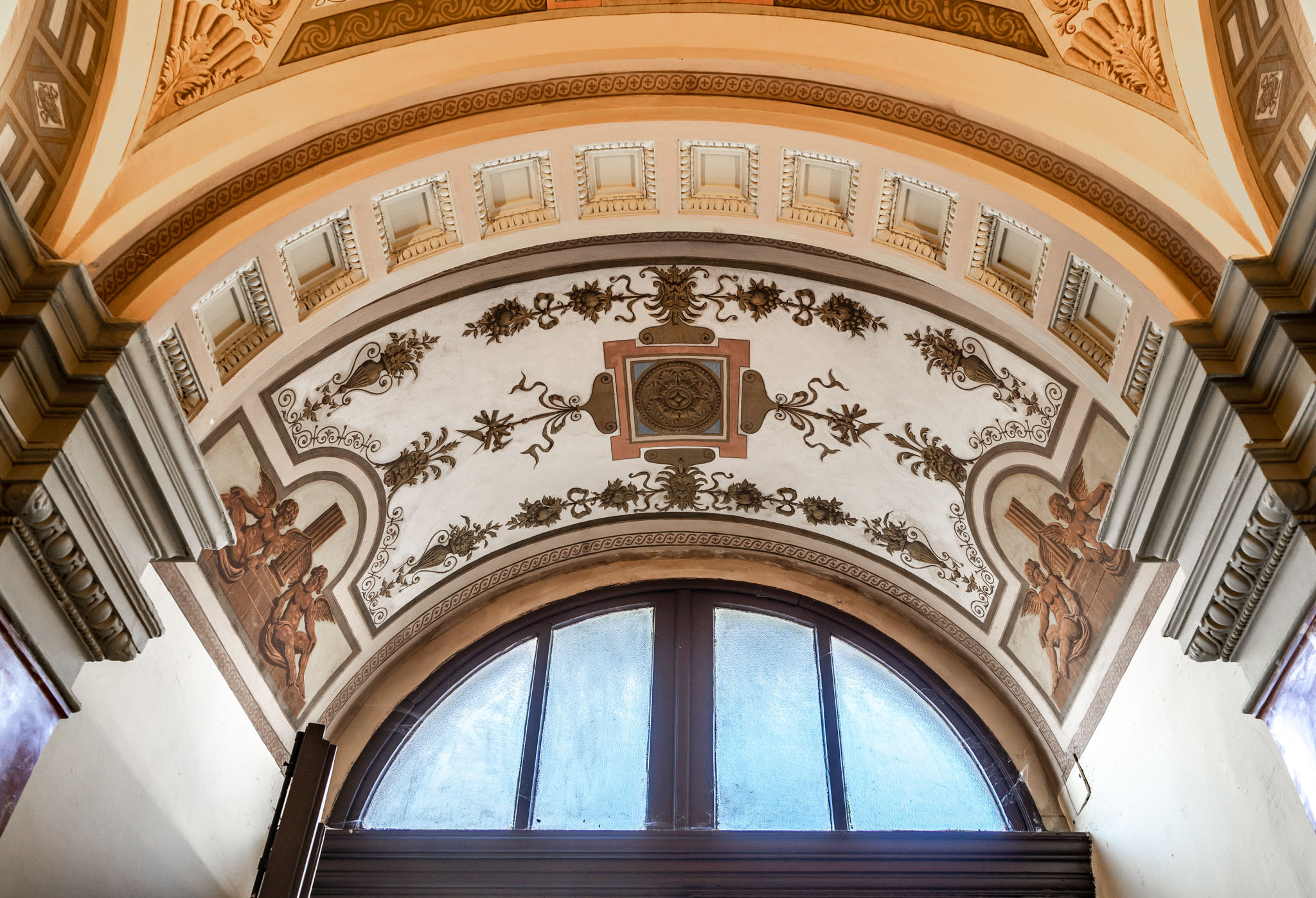
The ornate ceiling (Photo: Balázs Both/pestbuda.hu)
The Gáog cosmetics operated here even in the late 1980s, while on the ground floor of the building, until the change of regime, an electrical shop, and then in the 1990s, a travel agency operated. The facade was last renovated in 2018-2019. The condominium managed it in the usual way: in exchange for the renovation, the investor could build four flats in the attic. The building permit for the attic installation and gateway restoration was issued back in 2015, and the elevator was approved in 2018. The newly designed apartments received an occupancy permit on 7 April 2021.
Cover photo: 53 Andrássy Avenue (Photo: Balázs Both/pestbuda.hu)

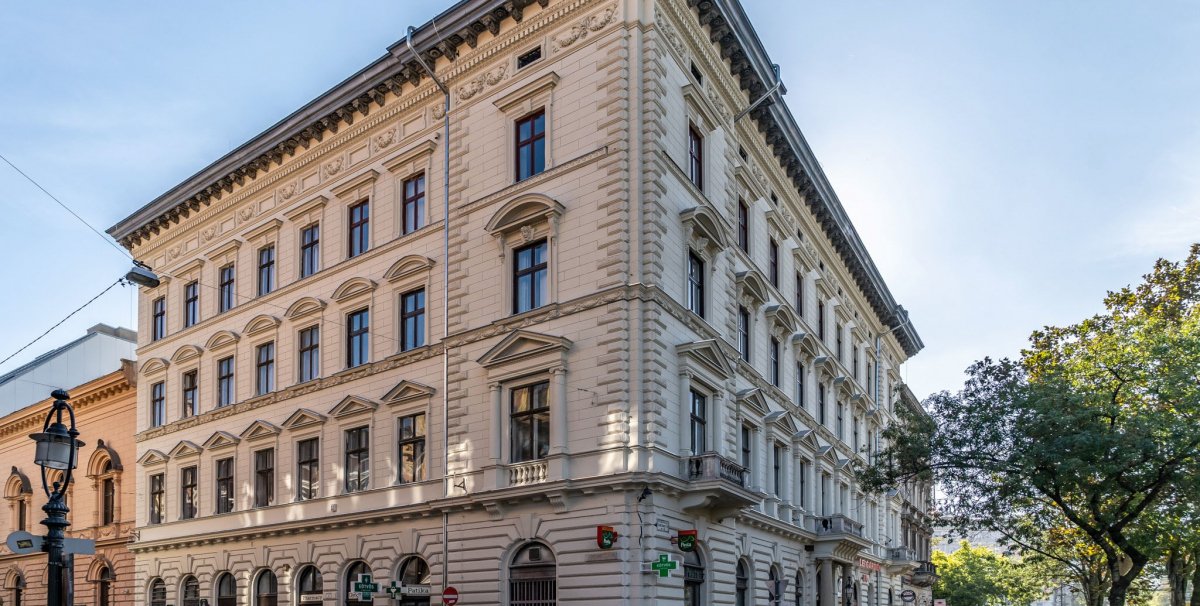


































Hozzászólások
Log in or register to comment!
Login Registration